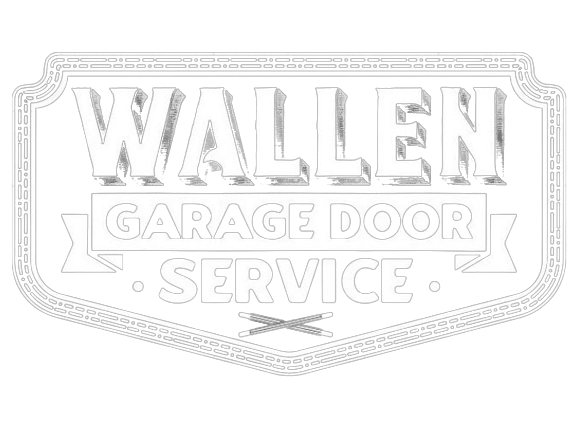Struggling to get your garage door opener working? Learn how to connect your LiftMaster garage door opener efficiently and enjoy seamless access to your garage. Whether you’re installing a new unit or reconnecting an existing one, having a properly connected opener ensures smooth operation and enhances the security of your home.
The LiftMaster garage door opener is a trusted device, known for its reliability and advanced features. When connected correctly, it can provide years of trouble-free service. However, the process of connecting or reconnecting it can seem daunting if you’re not familiar with the steps involved. This guide aims to demystify the process, offering a clear, step-by-step approach to ensure you get it right the first time.
Properly connecting your LiftMaster garage door opener is not just about convenience; it’s also about safety. An improperly connected opener can lead to malfunctions, which could potentially result in the door not opening or closing as it should. This could be particularly problematic in emergency situations or simply in your day-to-day routine. By following this guide, you’ll not only ensure that your garage door operates smoothly but also that it remains a secure entry point to your home.
We will cover everything from the tools and materials you’ll need, to detailed instructions on mounting, wiring, and programming your opener. By the end of this guide, you’ll have a comprehensive understanding of how to connect your LiftMaster garage door opener, ensuring it functions flawlessly.
Read on to discover how to get your LiftMaster garage door opener up and running efficiently, making your life easier and your home more secure.
Understanding LiftMaster Garage Door Opener

What is a LiftMaster Garage Door Opener?
A LiftMaster garage door opener is a high-quality, motorized device designed to automate the opening and closing of your garage door. LiftMaster, a leading brand in the industry, offers a range of models equipped with features such as smartphone control, battery backup, and enhanced security mechanisms. These openers are designed to provide convenience, security, and durability, making them an essential part of modern homes.
How Does it Function?
The LiftMaster garage door opener operates through a motor unit that drives a trolley along a rail, lifting or lowering the garage door as needed. Here’s a simple breakdown of its operation:
- Motor Unit: The heart of the opener, providing the power to move the door.
- Rail and Trolley: The rail guides the trolley, which is connected to the door and moves it up and down.
- Drive Mechanism: Depending on the model, this could be a belt, chain, or screw drive, each with its own advantages in terms of noise and durability.
- Remote Control: Allows you to open and close the door from a distance.
- Safety Sensors: Positioned near the floor on either side of the door, these sensors prevent the door from closing if an object or person is detected in its path.
Importance of Proper Connection and Maintenance
Ensuring your LiftMaster garage door opener is properly connected and maintained is crucial for several reasons:
- Safety: A correctly installed opener prevents accidents, such as the door closing unexpectedly or failing to reverse when an obstacle is detected.
- Security: Proper connection ensures that the door operates as intended, keeping your home secure from unauthorized access.
- Convenience: A well-functioning opener provides the convenience of seamless operation, allowing you to open and close your garage door effortlessly.
- Longevity: Regular maintenance and proper connection can extend the life of your opener, preventing costly repairs and replacements.
Without a proper connection, your garage door opener may experience operational issues, such as the door not opening or closing completely, the motor making unusual noises, or the remote control failing to communicate with the opener. These issues can be not only inconvenient but also potentially dangerous. Regular inspection and maintenance, along with a careful initial connection, ensure that your LiftMaster garage door opener remains a reliable part of your home’s infrastructure.
By understanding how your LiftMaster garage door opener functions and the importance of its proper connection, you can ensure that it provides you with years of safe, reliable service. Now, let’s dive into the steps for connecting your LiftMaster garage door opener.
Signs That Indicate a Connection is Needed
Common Issues That Require Reconnecting
Even the most reliable garage door openers can experience issues that necessitate reconnecting or reprogramming. Here are some common problems that might indicate a need to reconnect your LiftMaster garage door opener:
- Remote Control Failure: If your remote control is no longer opening or closing the garage door, it could be due to a lost connection between the remote and the opener.
- Incomplete Door Operation: If the door doesn’t open or close fully, or stops partway, the opener might need to be reconnected or the limits reset.
- Unusual Noises: Grinding or squeaking noises during operation can indicate a problem with the opener’s connection or alignment.
- Inconsistent Operation: If the garage door operates intermittently or only works after multiple attempts, it may be time to check the connection.
- Sensor Malfunctions: If the safety sensors are not properly aligned or connected, the door may not close correctly, reversing unexpectedly.
Why Prompt Connection is Crucial for Safety and Convenience
Addressing connection issues promptly is vital for several reasons:
- Safety: A malfunctioning garage door can pose significant safety risks. For example, if the door doesn’t reverse when it detects an obstacle, it could cause injury or damage. Ensuring the opener is properly connected helps maintain all safety features.
- Security: An improperly functioning garage door can be an easy target for intruders. Ensuring that the door closes securely and opens only when you want it to is essential for home security.
- Convenience: A well-connected garage door opener saves you from the frustration of dealing with a door that won’t open or close properly. It ensures that you can enter and exit your garage smoothly and without hassle.
- Preventing Further Damage: Ignoring connection issues can lead to more significant problems over time, potentially damaging the opener or the door mechanism itself. Prompt attention to connection issues can prevent expensive repairs in the future.
In summary, recognizing the signs that your LiftMaster garage door opener needs to be reconnected and addressing them quickly is essential for maintaining the safety, security, and convenience of your home.
Steps for Connecting LiftMaster Garage Door Opener
Tools and Materials Needed
Before you begin, make sure you have the following tools and materials ready:
- Ladder
- Screwdrivers (flathead and Phillips)
- Power drill with bits
- Wrench set
- Pliers
- Tape measure
- Pencil or marker
- Mounting brackets (included with the opener)
- Rail and trolley assembly (included with the opener)
- Remote control (included with the opener)
- Instruction manual (included with the opener)
- Safety goggles and gloves
Safety Precautions Before Starting
Ensuring safety during the installation process is crucial:
- Turn Off the Power: Before starting, make sure the power to your garage door opener is turned off to prevent any accidental activation.
- Wear Safety Gear: Use safety goggles and gloves to protect your eyes and hands from potential injury.
- Clear the Area: Ensure the garage is free from obstructions and that children and pets are kept away from the work area.
- Use a Stable Ladder: Make sure your ladder is stable and positioned on a flat surface to avoid falls.
Step-by-Step Guide to Connecting the Opener
Preparation
- Ensure Power is Off: Confirm that the power to the garage door opener is turned off at the breaker.
- Gather All Tools and Materials: Have all your tools and materials within easy reach to streamline the installation process.
Mounting the Opener
- Position the Opener: Identify the optimal position on the garage ceiling, ensuring it is centered and aligned with the garage door.
- Secure the Mounting Brackets: Using the power drill, attach the mounting brackets to the ceiling joists. Ensure they are firmly secured to support the weight of the opener.
Installing the Components
- Attach the Rail: Connect the rail to the motor unit, following the manufacturer’s instructions. Ensure it is aligned correctly.
- Connect the Trolley and Arm: Attach the trolley to the rail and then connect the arm to the garage door. The arm will transfer the motion from the motor to the door.
- Mount the Motor Unit: Lift the motor unit into place and secure it to the mounting brackets. Double-check that all connections are tight and the unit is level.
Wiring the Opener
- Connect the Wires: Follow the instruction manual to connect the power wires to the motor unit. Typically, this involves connecting the black, white, and green (ground) wires.
- Route the Wires Safely: Ensure all wires are routed neatly along the ceiling and walls, securing them with clips or staples to prevent them from dangling or getting caught.
Programming the Opener
- Sync the Remote Control: Follow the manufacturer’s instructions to sync the remote control with the opener. This usually involves pressing a button on the motor unit and then pressing a button on the remote.
- Set Limits and Force: Adjust the up and down travel limits and the force settings according to the instruction manual. These settings control how far the door travels and the amount of force it uses to open and close.
Testing the Opener
- Check Door Operation: Turn the power back on and test the garage door to ensure it opens and closes smoothly. Use the remote control to operate the door and check that it responds correctly.
- Troubleshoot Issues: If the door does not operate correctly, refer to the troubleshooting section of the manual. Common issues might include misaligned sensors or incorrect limit settings. Make necessary adjustments until the door functions properly.
By following these steps, you’ll have your LiftMaster garage door opener connected and working efficiently. Remember to regularly check and maintain your opener to ensure long-term reliability and safety.
Testing and Adjustments
Once you’ve installed and connected your LiftMaster garage door opener, it’s crucial to thoroughly test its functionality and make any necessary adjustments to ensure it operates optimally. This step ensures that your garage door opener works reliably and safely.
Testing the New Connection’s Functionality
- Initial Power-On Test:
- Restore Power: Turn the power back on to the garage door opener at the breaker.
- Remote Control Test: Use the remote control to open and close the garage door. Stand clear of the door’s path to ensure it operates without any obstructions.
- Wall Control Test: If you have a wall-mounted control panel, use it to operate the garage door. Verify that it opens and closes smoothly.
- Sensor Alignment Check:
- Safety Sensors: Ensure that the safety sensors located near the bottom of the garage door tracks are aligned. They should be facing each other with their indicator lights steady. If the lights are blinking, the sensors may be misaligned or obstructed.
- Obstacle Test: Place an object (like a cardboard box) in the path of the closing door. The door should reverse direction upon sensing the object. If it doesn’t, recheck the sensor alignment and wiring connections.
- Manual Operation Test:
- Emergency Release Cord: Pull the emergency release cord to disengage the trolley from the rail. Manually lift the door to ensure it moves freely and isn’t binding at any point.
- Re-engage the Trolley: Reconnect the trolley by operating the garage door opener, which should cause the trolley to latch back onto the rail.
Adjusting Settings for Optimal Performance
- Setting Travel Limits:
- Up Limit Adjustment: Locate the up limit adjustment screw on the motor unit. Using a screwdriver, turn the screw to set how far the door opens. Test the door by opening it fully to ensure it stops at the desired height.
- Down Limit Adjustment: Similarly, adjust the down limit screw to set how far the door closes. The door should close completely without over-pressing into the floor. Make small adjustments and test after each tweak.
- Adjusting the Force Settings:
- Up Force Adjustment: This setting controls the amount of force applied when the door is opening. Increase the force if the door struggles to open, but only slightly to avoid unnecessary strain on the opener.
- Down Force Adjustment: Adjust the down force to control the closing strength of the door. Ensure the door closes firmly but can still reverse easily if it encounters an obstacle.
- Speed Settings (if applicable):
- Some LiftMaster models allow for speed adjustments. Refer to your user manual to adjust the opening and closing speed of the door. Set it to a speed that ensures smooth operation without causing undue stress on the system.
- Remote Range Test:
- Distance Check: Move to different areas around your property and test the remote control to ensure it operates the door from a reasonable distance. This verifies that the remote signal is strong and the opener’s receiver is functioning correctly.
- Final Inspection:
- Loose Screws and Bolts: Double-check all screws, bolts, and mounting hardware to ensure they are tight and secure. Loose-fitting components can lead to shakings and noise during operation.
- Lubrication: Apply lubrication to moving parts such as hinges, rollers, and the rail to ensure smooth and quiet operation. Best lubricant to use is one designed specifically for garage doors.
By thoroughly testing and adjusting your LiftMaster garage door opener, you ensure that it operates safely, efficiently, and reliably. Regular maintenance checks and adjustments will keep your garage door system in top condition, providing you with peace of mind and seamless access to your garage.
Maintenance Tips to Ensure Long-Term Performance
To ensure your LiftMaster garage door opener continues to operate smoothly and reliably, regular maintenance is key. Proper upkeep not only extends the life of your opener but also enhances the safety and security of your home. Here’s how you can keep your LiftMaster opener in top condition.

How to Keep Your LiftMaster Opener in Top Condition
- Regular Lubrication:
- Moving Parts: Apply a high-quality garage door lubricant to all moving parts, including the rollers, hinges, and tracks. Lubricate these parts every six months to reduce friction and wear.
- Chain/Belt Drive: For chain-driven openers, apply a small amount of lubricant to the chain. Belt-driven openers typically require less lubrication, but it’s still a good idea to check the belt for signs of wear and apply lubricant if necessary.
- Inspect the Door Balance:
- Manual Balance Test: Disconnect the opener by pulling the emergency release handle. Pull the door open after lifting it halfway manually. The door should stay in place. If it falls or rises, it may be unbalanced, indicating a need for professional adjustment.
- Check and Tighten Hardware:
- Mounting Brackets and Rails: Regularly inspect all bolts, screws, and mounting hardware to ensure they are tight. Vibrations from daily use can cause these components to loosen over time.
- Roller Brackets: Tighten any loose roller brackets, but do not adjust or tighten the brackets attached to the door’s torsion springs, as this can be dangerous.
- Test Safety Features:
- Auto-Reverse Mechanism: Place an object in the door’s path and close the door. It should reverse when it contacts the object. If it doesn’t, adjust the auto-reverse mechanism according to the manufacturer’s instructions.
- Photoelectric Sensors: Ensure the photoelectric sensors are aligned and free from debris. The indicator lights should be steady. Clean the lenses periodically with a soft, dry cloth.
- Examine Cables and Springs:
- Visual Inspection: Look for signs of wear or damage on the cables and springs. Do not attempt to repair or adjust these components yourself, as they are under high tension and can cause serious injury. Call a qualified technician if you see any problems.
- Clean the Tracks:
- Debris Removal: Ensure the tracks are free from debris and obstructions. Use a damp cloth to wipe down the tracks, and avoid using lubricants on the tracks, as they can attract dirt and grime.
- Test Remote Controls and Keypads:
- Battery Replacement: Replace the batteries in your remote controls and keypads at least once a year or when you notice a decrease in range or response time.
- Functionality Check: Regularly test all remote controls and wall-mounted keypads to ensure they are working properly.
Recommended Schedule for Inspection and Maintenance
- Monthly:
- Test the photoelectric sensors and the auto-reverse system.
- Inspect the door balance and perform the manual balance test.
- Check and tighten any loose hardware.
- Every Six Months:
- Lubricate all moving parts, including rollers, hinges, and the chain or belt drive.
- Clean the tracks and ensure they are free from debris.
- Check cables and springs for signs of wear or damage.
- Annually:
- Change the batteries in remote controls and keypads.
- Conduct a thorough inspection of the entire system, including the opener, door, and all components.
- Schedule a professional maintenance service to address any potential issues and ensure the opener is in optimal condition.
By following these maintenance tips and adhering to the recommended schedule, you can keep your LiftMaster garage door opener functioning smoothly for years to come. Regular maintenance not only prevents unexpected breakdowns but also ensures the safety and security of your home, providing you with peace of mind and reliable performance from your garage door system.

How often should I reconnect or reprogram my LiftMaster garage door opener?
Typically, you should check the connection annually or whenever you experience operational issues. Regular checks ensure that your opener is functioning correctly and can help identify any potential problems early. Additionally, if you notice issues such as the door not responding to the remote or the opener behaving erratically, it might be time to reconnect or reprogram the unit. Staying proactive with these checks can prevent more significant problems down the line.
Can I connect the LiftMaster garage door opener myself, or should I hire a professional?
You can connect it yourself by following the steps carefully, but hiring a professional is recommended if you’re unsure. The process of connecting a LiftMaster garage door opener is designed to be manageable for those with basic DIY skills. However, it requires attention to detail and adherence to safety guidelines. If you’re not confident in your ability to complete the task safely or encounter any difficulties, it’s wise to hire a professional to ensure the job is done correctly and safely.
What tools do I need for connecting a LiftMaster garage door opener?
Common tools include a ladder, screwdriver, drill, and the opener kit. Specifically, you will need:
- A ladder to reach the ceiling-mounted motor unit and other high components.
- Screwdrivers (both flathead and Phillips) for securing screws and brackets.
- A power drill for making holes and securing heavier components.
- The opener kit, which includes mounting brackets, the motor unit, rail, trolley, and remote controls. Having these tools on hand before you start will make the installation process smoother and more efficient.
How do I know if my LiftMaster garage door opener is connected properly?
Check for smooth operation, responsiveness to the remote, and no unusual noises. Once connected, operate the garage door using the remote control and wall-mounted control panel. The door should open and close smoothly without jerking or hesitation. It should also respond promptly to commands from the remote. Listen for any unusual noises such as grinding or squeaking, which could indicate that the opener or door needs adjustment. Proper connection will be evident through consistent and reliable performance.
Is it normal for a LiftMaster garage door opener to make noise during operation?
Minimal noise is expected, but unusual or loud sounds could indicate a need for adjustment or maintenance. LiftMaster garage door openers are designed to operate relatively quietly, especially belt-driven models. Some noise is normal, particularly from chain-driven openers. However, if you notice loud or unusual sounds such as grinding, rattling, or excessive squeaking, it may indicate a problem with the opener’s components or alignment. Regular maintenance and prompt attention to these sounds can help keep your opener running smoothly.
Conclusion
A properly connected LiftMaster garage door opener is essential for the security, convenience, and safety of your home. When your opener is correctly installed and maintained, it ensures smooth and reliable operation of your garage door, giving you seamless access to your garage and protecting your home from unauthorized entry. It also enhances the longevity of the system, reducing the risk of unexpected breakdowns and costly repairs. Regular checks and a solid understanding of your opener’s connection can prevent many common issues, keeping your daily routine running smoothly.
Regular maintenance and prompt reconnection of your LiftMaster garage door opener are key to its long-term performance. By staying proactive with maintenance tasks such as lubrication, hardware checks, and safety feature tests, you can ensure that your opener remains in top condition. Addressing operational issues as soon as they arise and reconnecting the opener if necessary will prevent minor problems from turning into major inconveniences. Regular upkeep not only boosts the lifespan of your opener but also ensures that your garage door operates safely and efficiently at all times.
For a deeper dive into connecting and maintaining your LiftMaster garage door opener, including step-by-step instructions, troubleshooting tips, and expert advice, continue reading our comprehensive guide. This resource will provide you with all the information you need to handle any issues that arise and keep your opener running smoothly. By following our detailed guidance, you can enjoy the full benefits of your LiftMaster garage door opener and ensure your garage door system remains reliable for years to come.






